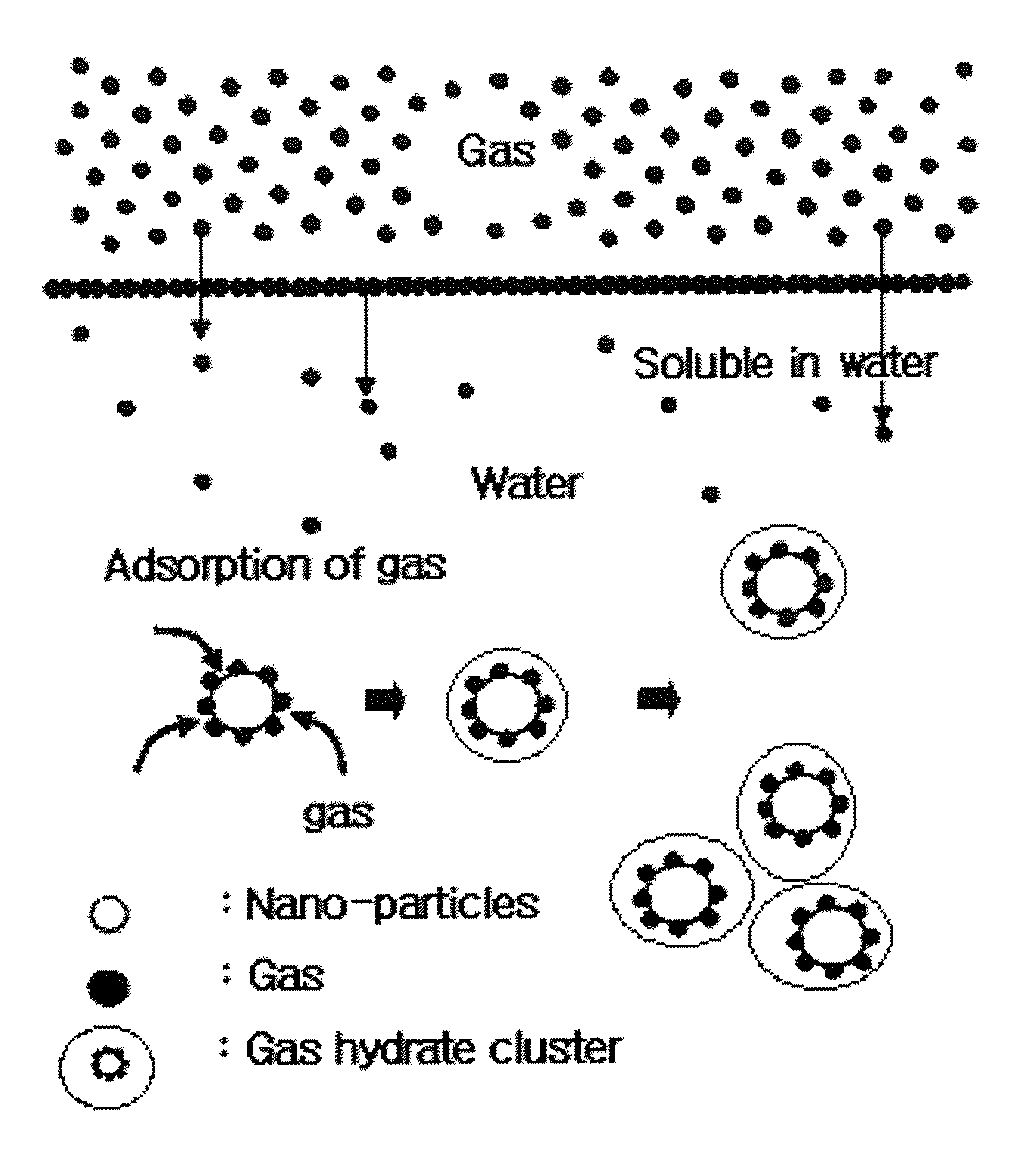SEPARATION, PURIFICATION AND RECOVERY METHOD OF SF6, HFCs AND PFCs
a technology of sf6, hfcs or pfcs, applied in the direction of separation processes, sulfur compounds, sulfur and halogen compounds, etc., can solve the problems of a lot of energy, and achieve the effects of reducing energy consumption, reducing emission, and effectively coping
- Summary
- Abstract
- Description
- Claims
- Application Information
AI Technical Summary
Benefits of technology
Problems solved by technology
Method used
Image
Examples
embodiment 1
Separation, Purification and Recovery Ratio Experiment of SF6 and Mixed Gas
[0026]Pure water(HPLC grade, 99.999%) of 125 ml is injected into a reactor, and the interior of the reactor is purged a few times by using a SF6 50%(N2 Balance) gas. The hydrate is formed at a pressure of 7.8 bar, a temperature of 276K, and an agitating speed of 500 rpm. The reactor is substantially cooled to a low temperature after the hydrate formation reaction is completed, and SF6+N2 gas, which is not changed to hydrate, is discharged from the interior of the reactor to the outside. The interior of the reactor containing only hydrate is set at a pressure of 7 bar and a temperature of 293 K, so the hydrate is dissociated. The Quantitative and Qualitative Analysis is performed using GC((Varian CP3800 Gas Chromatograph, TCD) with respect to the dissociated gas. FIGS. 3 and 4 show a result of the above experiment, respectively.
embodiment 2
Effect Comparison Experiment by Promoter
[0027]Pure water(HPLC grade, 99.999%) of 125 ml is injected into a reactor, and the interior of the reactor is purged using SF6 of 99.99%, and the hydrate formation speed is analyzed by setting a pressure of 7.8 bar and a temperature of 276K. FIG. 5 shows a result of the above experiment.
embodiment 3
Effect Experiment of LABS Promoter
[0028]Aqueous solution including Linear Alkyl Benzene Sulfonate, LABS, Aldrich is prepared depending on concentrations and is substantially mixed and melt in water. 125 ml of LABS aqueous solution prepared by concentrations is injected into the reactor same as the embodiment 2, and the interior of the reactor is purged using SF6 of 99.9%, and the SF6 hydrate formation speed is analyzed based on the time by setting a pressure of 7.8 bar and a temperature of 276K. FIG. 5 shows a result of the above experiment.
[0029]As shown in FIGS. 3 and 4, as a result of the analysis of gas obtained through a hydrate formation dissociation using SF6 of 50%(N2 Balance) gas, a composition of SF6 is about 80%, and a composition of N2 is about 20%. Namely, it is known that a separation, purification and recovery of SF6 and HFCs can be performed through the experiment of the present invention.
[0030]As shown in FIG. 5, when SF6 hydrate is formed with pure water(HPLC grade...
PUM
| Property | Measurement | Unit |
|---|---|---|
| temperature | aaaaa | aaaaa |
| temperature | aaaaa | aaaaa |
| pressure | aaaaa | aaaaa |
Abstract
Description
Claims
Application Information
 Login to View More
Login to View More - R&D
- Intellectual Property
- Life Sciences
- Materials
- Tech Scout
- Unparalleled Data Quality
- Higher Quality Content
- 60% Fewer Hallucinations
Browse by: Latest US Patents, China's latest patents, Technical Efficacy Thesaurus, Application Domain, Technology Topic, Popular Technical Reports.
© 2025 PatSnap. All rights reserved.Legal|Privacy policy|Modern Slavery Act Transparency Statement|Sitemap|About US| Contact US: help@patsnap.com



